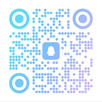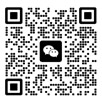Abstract:With the development of the internet, its resources are used in many fields. It can be impliedin the language teaching. .Internet can provide the ideal materials as language input and give assistance for the practice of second language acquisition. Relatedwebsites which are good for Englishacquisitionare listed last.
Key words: Internet, second language acquisition; input language
中图分类号:H3
Introduction
Second language acquisitionis the process people learn languages in addition to their native language(s). The term second languageis used to describe any language whose acquisition starts after early childhood (including what may be the third or subsequent language learned). And the learning process is often conducted without the social environmentof target language. This article uses Englishlearning as the example to illustrate the function of internet insecond language acquisition. In recent years, this is a hot topic of using internet techniqueandsource to assist Englishlearning. Many researchers try to find the theory which can support the opinion. The theory of second language acquisition is one of the theories to investigatethe function of internet technique in foreign language learning. The process of language acquisitionshouldn’t be finished without the language environmentand input. So providing the language environmentand input is essential to language acquisition. As the carrier of the abundantlanguage and lexical information, internet technique and source is absolutelythe assistance for language acquisition.
1. Theoretical Basis
1.1The InputHypothesis
The Inputhypothesis is Krashen's attempt to explain how the learner acquires a second language. In other words, this hypothesis is Krashen's explanation of how second language acquisition takes place. So, the Input hypothesis is only concerned with 'acquisition', not 'learning'. According to this hypothesis, the learner improves and progresses along the 'natural order' when he/she receives second language 'input' that is one step beyond his/her current stage of linguistic competence. For example, if a learner is at a stage 'i', then acquisition takes place when he/she is exposed to 'Comprehensible Input' that belongs to level 'i + 1'. Since not all of the learners can be at the same level of linguistic competence at the same time, Krashen suggests that natural communicative inputis the key to designing a syllabus, ensuring in this way that each learner will receive some 'i + 1' input that is appropriate for his/her current stage of linguistic competence.
1.2 The Affective FilterHypothesis
The affective filterhypothesis embodies Krashen's view that a number of 'affective variables' play a facilitative, but non-causal, role in second language acquisition. These variables include: motivation, self-confidence and anxiety. Krashen claims that learners with high motivation, self-confidence, a good self-image, and a low level of anxiety are better equipped for success in second language acquisition. Low motivation, low self-esteem, and debilitating anxiety can combine to 'raise' the affective filter and form a 'mental block' that prevents comprehensible input from being used for acquisition. In other words, when the filter is 'up' it impedes language acquisition. On the other hand, positive affect is necessary, but not sufficient on its own, for acquisition to take place. AThreeRequirements of the Language Input in Language Acquisition Frequent and Abundant Language The realization of language acquisitionasks for deeply and widely contact of abundant language materials. The students should absorb rich authentictarget language and contact, percept, analyze, understand, andaccept the information of the target language. They store the information which had been understood and accepted and input enough information in the brain. This will prepare for the language output. So the process of second language acquisition can be fulfilledafter supported enough authentic target language materials.
And internet can provide us variousmessages. We can know the world without going out. It also gives us many authenticEnglishmaterials, standard pronunciationand real language context. Internet provides the students a real context of languagecommunication. Comprehensible Language The efficientinput language should be comprehensible. Comprehensible inputis heard or read and should be slightly ahead of a learner’s current state of grammatical knowledge. Language containing structures a learner already knows essentially serves no purpose in acquisition. Similarly, language containing structures ahead of a learner’s current knowledge is not useful. Alearner does not have the ability to “do”anything with those structures. Krashen defineda learner’s current state of knowledge as i and the next stage as i+1. Thus the input a learner is exposed to must be at the i+1 level in terms of acquisition. “We move from i, our current level to i+1, the next level along the natural order, by understanding input containing i+1”.
The internet provides abundant language materials from authenticEnglishand phrasesof different countries to videos of different pronunciation and tones. Because the internet is very popular, the language in it should be understanderable and comprehensible. Compared with the interlanguage which used in the classroom, the material is quite different. Learners will acquire this kind of language gradually after contacting, analyzing, understanding and accepting these materials repeatedly. The Low Affective FilterLanguage Krashen alsopoint outthe affective filterhypothesis, embodies Krashen's view that a number of 'affective variables' play a facilitative, but non-causal, role in second language acquisition. These variables include: motivation, self-confidence and anxiety. Krashen claims that learners with high motivation, self-confidence, a good self-image, and a low level of anxiety are better equipped for success in second language acquisition. Low motivation, low self-esteem, and debilitating anxiety can combine to 'raise' the affective filter and form a 'mental block' that prevents comprehensible input from being used for acquisition. In other words, when the filter is 'up' it impedes language acquisition. On the other hand, positive affect is necessary, but not sufficient on its own, for acquisition to take place.So the input language should be interesting and meet the need of learners.
Internet is a fabled language environment which will reduce the mental block. The materials are various, learners can choose by themselves. And in a fabled world, learners don’tface the real human they won’tbe worried to be laughed at and will use acquiredlanguage to communicate bravely. This can promote the acquisition.
In summary, internet can provide the language materials which are standard for second language acquisition and a relaxed freely studying environment. It can give learners the chance to contact with the more authenticlanguage.
3. Things Which Internet Can Provide for Second Language Acquisition
3.1 Different Speech Input
The speech information in people’s brain is mainly from two sources: one is aeroinput another is visualinput. Aero input aims at contacting with the phonetic characters of target language and helping learners acquire phonetic ability. Internet can provide abundant authenticspeech materials. Music, movie, TV, chatting, all kinds sources on net are good speech materials. Learners can intimate the pronunciation and tone through this way and will get the speech ability unconsciously.
 《辽宁师范大学学报(社会科学版)》
《辽宁师范大学学报(社会科学版)》 《新疆警察学院学报》
《新疆警察学院学报》 《电机与控制应用》
《电机与控制应用》 编辑QQ
编辑QQ  编辑联络
编辑联络 

